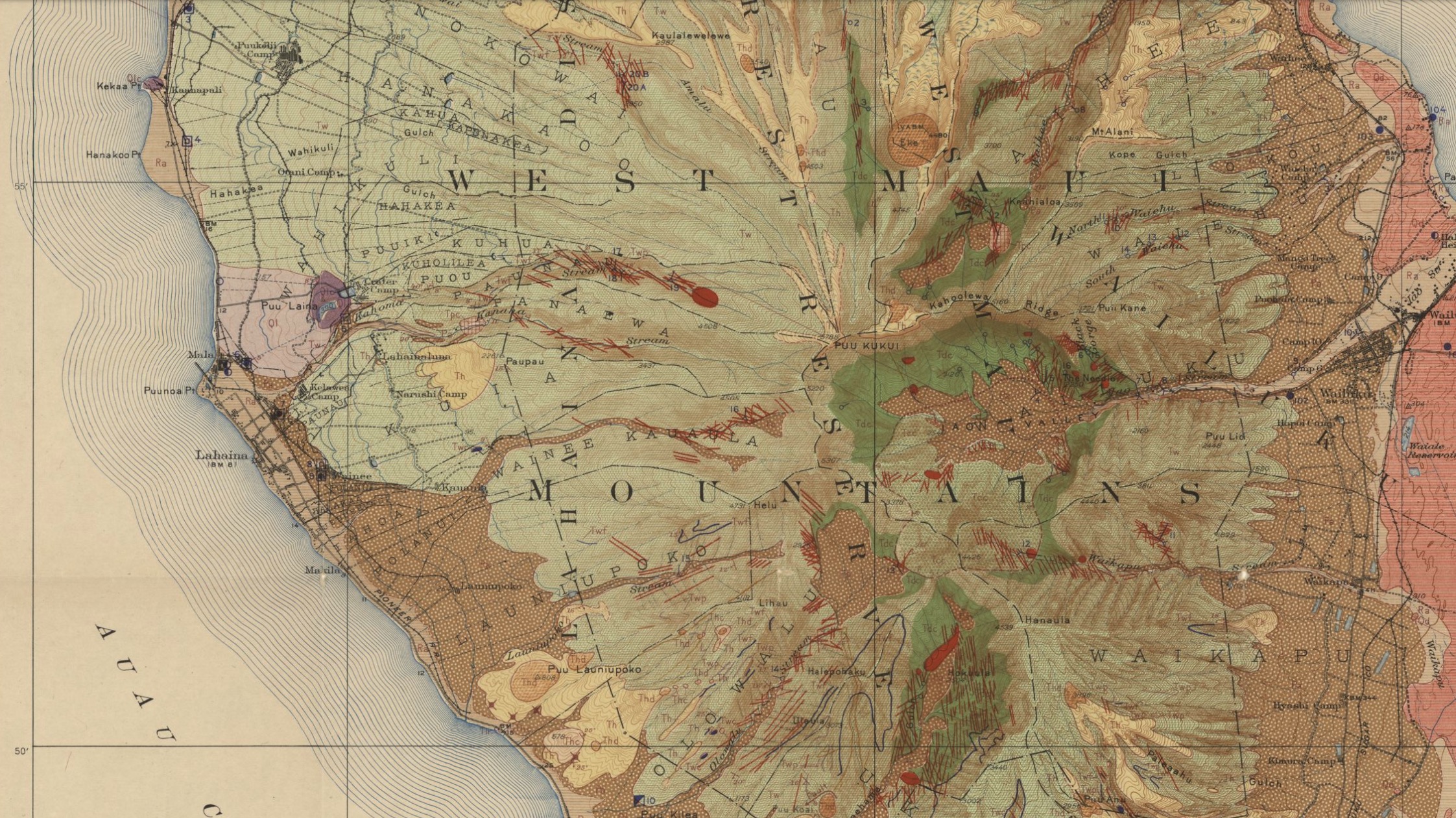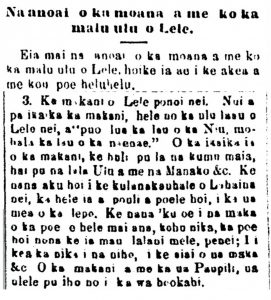
Na anoai o ka moana a me ko ka malu ulu o Lele
It is believed that climate patterns have been observed by our kūpuna since time immemorial. The term “noho papa” refers to someone who has lived in one place for many generations. What might we learn from those kūpuna and how might that help us navigate an increasingly uncertain future? Predicting, detecting, and tracking climate-related change through the use of traditional ecological knowledge is arguably part of the solution. All too often, there is an assumption that this knowledge passed with our kūpuna, and thus “ua hala i ke ala hoʻi ʻole mai.” However, by focusing on Hawaiian language newspapers, we have an unparalleled opportunity to query an archive of indigenous knowledge for climate data.
In this post, we introduce you to a selected piece authored by S.P.K. Nawaʻa in 1877. This article carefully describes the force of the wind at Lāhainā. This is just one article of many that describes the gusty, powerful wind in this area and the damage it has historically caused.
If you want to learn the pule and oli for Maui, please visit this link.

News From The Ocean And The Breadfruit Shade Of Lele
3. The wind here in Lele [Lāhainā]. There was a great deal of wind blowing strongly, so that the plants of Lele resembled the saying, “the Coconut fronds are doubly bent, the leaves of the naenae are open.” The force of the wind was such that the banana trees also bent over, and the branches of the breadfruit tree, mango tree, etc. all broke. The city of Lāhainā appeared dark as night, due to that dust . . .
Citation: S.P.K. Nawaa. 1877 June 16. “Na Anoai O Ka Moana A Me Ko Ka Malu Ulu O Lele.” Ka Nupepa Kuokoa, Vol. XVI, Num 24, Page 1. Retrieved from Papakilo Database https://papakilodatabase.com. Translated by Iasona Ellinwood, Kapomaikaʻi Stone, and M. Puakea Nogelmeier, Institute of Hawaiian Language and Research Translation, 2013. Honolulu, HI: University of Hawaiʻi.
